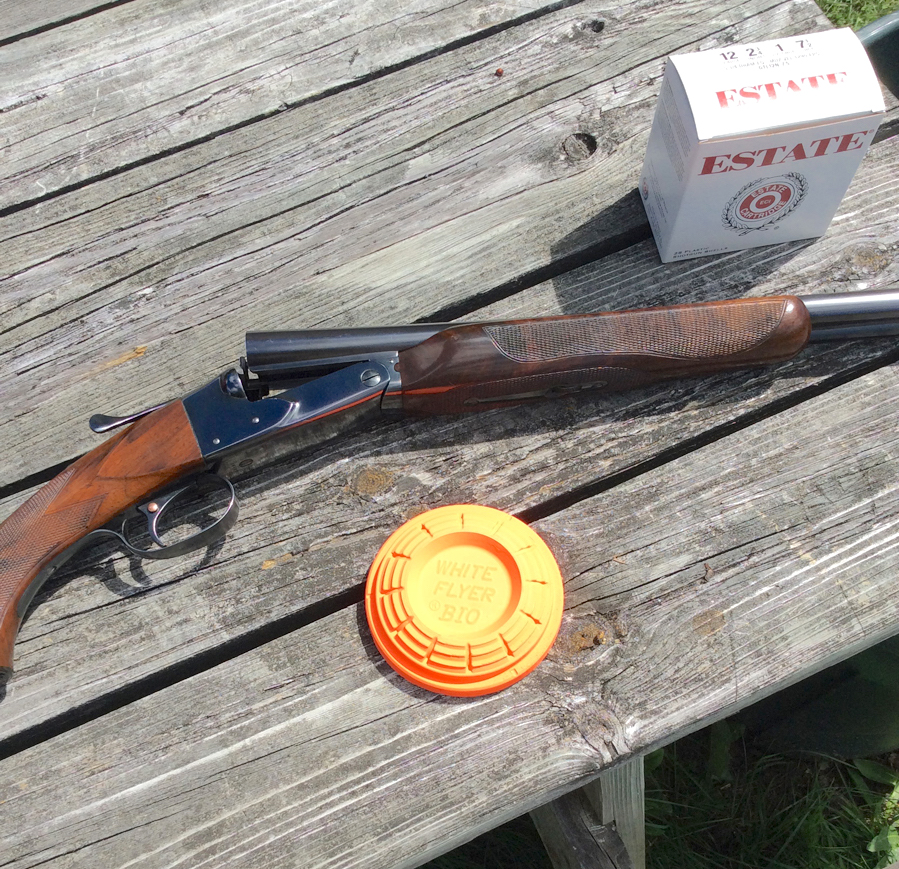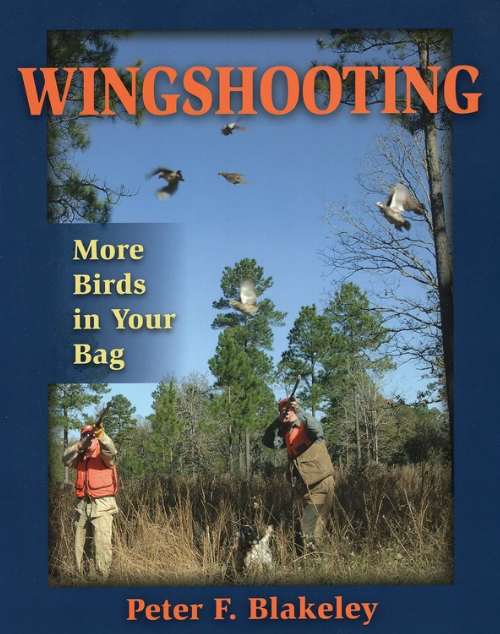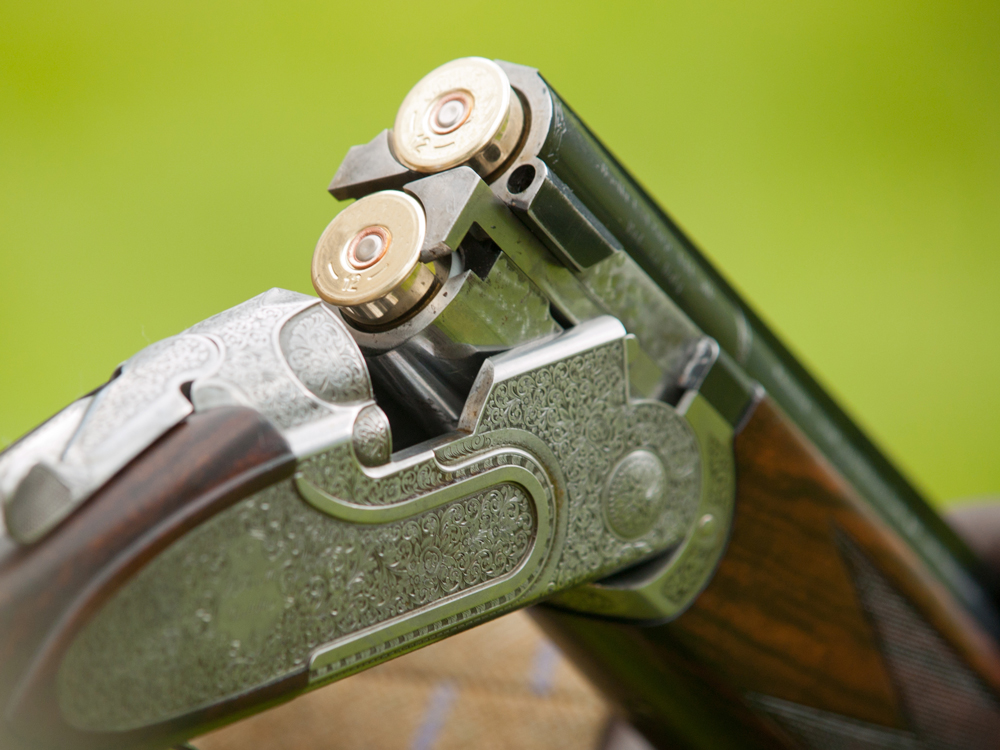For the bird hunting faithful, there’s nothing like a round of five stand shooting to liven up a summer and brush up your skills.
On the edge of the White Mountains in New Hampshire, at the end of a Class Six discontinued road (i.e. tractor trail), on top of a hill with a view of The Whites, is a friendly five stand shooting course.
No rabbits, midis, minis, battues here, just standard-size orange clay pigeons that fly from seven stations. Ten traps that present targets of varying speeds that fade, dive, curve, drop, climb and plummet, with five shooting stations that vary the angle of presentation as the shooter progresses from stand to stand. Imagine grouse hunting, pass-shooting ducks, woodcock flushing and geese decoying in an area a bit bigger than a football field. Nothing ridiculous; just targets that imitate actual gamebirds as closely as possible. Targets as hard and as simple as that.
Bird hunting is a way of life in New Hampshire. We have access to uplands, wetlands, rivers, lakes and a bit of seashore. That means access to ruffed grouse, woodcock, pheasants, ducks and geese. And during the offseason we have access to clay targets. Among bird hunters, the clay target games trap and skeet remain popular. And five stand—well, that adds even more target variations. Many bird hunters shoot all three games. A flying target that you imagine is a duck or woodcock disappears into powder at your shot. “Smoked,” as we say. Now that is positive reinforcement.

Lining up for the next clay.
Anyone who has been to a fishing lodge or casino knows that there is no such thing as a “friendly game of poker.” However, there are friendly five stand shooting venues where shooters practice, talk, joke, give compliments and do not compete. Nobody is keeping score. Here, the shooter is competing against himself and the targets. He is not trying to break more birds than other shooters. He is just trying to break his bird, and when he breaks a pair of hard ones, he’ll hear “nice shot” from other shooters. And he’ll say the same to you.
It is a friendly place, this five stand shooting course. We are all watching—because we all will get a chance to break the bird you just powdered, and we want to see how you did it. And then powder it ourselves.
How to Shoot Five Stand
It’s 10 a.m. on a Sunday, and we drive up the Class Six road toward the sound of shotguns. As we pull in we see seven cars parked in a row next to a shed. As we look, two fast targets come out of the second-floor window of the shed and flash over a line of five shooters. The number four man shoots, smokes one and chips the other. We hear a chorus of congratulations as we get out of my Jeep.
The seven-house double is hard, and everyone likes to see both birds taken—it gives us all hope. Walt ejects a pair of 16-gauge shells from his fine Edinburgh-made side-by-side and grins. We place our shotguns in the racks alongside the shed and sit down.

It doesn’t matter what you shoot—pump, auto, over/under, etc.—so long as you shoot accurately.
Dave is sitting behind the control table and pushes buttons at the shooter’s call. The number five shooter calls, “Pull”, and two clays come out of the station four traps and fly high, quartering right to left. Bruce breaks one bird and watches the second target fly unscathed into the undergrowth at the end of the field. The shooting ground is an area of low, rough grass a hundred yards long and 50 yards wide. Brush and low trees are at the borders, and the shooters look out from their stations at the distant White Mountains. First-time gunners find the view distracting.
Dave grins at us.
“Bob, you and your friend are up next. We’ve just finished this round, and as soon as we have three more shooters, we’ll go again.”
We smile and nod and wait. In the break between rounds shooters show off their guns, talk about how to hit high six, ask friends about their dogs, bird covers and planned trips. Here, guns and bird hunting are spoken. Pumps, autoloaders, side-by-sides and over/unders in all gauges are in the racks. Mossbergs, Brownings, Parkers, Winchesters, Remingtons, Purdeys, William Fords, L.C. Smiths—all are at home here and are here to play. Welcome to New Hampshire.
Hunting trips are planned; guns, on occasion, are bought and sold; a stray word reveals a grouse cover; gunsmiths and gun shops are recommended. Welcome to New Hampshire. Shotgun spoken here.
Our turn. Dave has corralled three other shooters and filled the line. My first bird is a single. I load two shells and call for the bird from station one. It is a quickly rising left-to-right quartering bird coming from a hidden trap. A chip, and then splinters at my second shot. I watch the other shooters’ singles as I wait.

Nothing wrong with a side-by for five stand.
My turn again, a report pair. The second target will be thrown at the sound of my shot. The menu reads two and five. I call for the bird, powder number two and take the front edge off of the five bird. Then I watch, wait and plan my shots.
This time it’s a true pair, two clays in the air at the same time. Stations four and three. Four is a fast target; I plan to take it first and then shoot three, a slowly dropping crosser. I hit four but, fooled into shooting over the target, miss three cleanly.
The five targets for stand one have flown—four dead, one missed. After everyone has finished his pair, we move to the next stand. I move to position two and load two shells. I call for my target…
Welcome to New Hampshire.
 Shooting advice from a fellow bird hunter and professional shooting coach who explains why you miss and what you can do about it. Peter Blakeley’s revolutionary unit lead system for learning to shoot well has put more birds in many a hunter’s bag. His unique instruction helps simplify that elusive and key element of the successful bird hunter: forward allowance, or lead.
Shooting advice from a fellow bird hunter and professional shooting coach who explains why you miss and what you can do about it. Peter Blakeley’s revolutionary unit lead system for learning to shoot well has put more birds in many a hunter’s bag. His unique instruction helps simplify that elusive and key element of the successful bird hunter: forward allowance, or lead.
Successful shotgunning depends on creating accurate sight pictures of the birds. Wingshooting explores the three variables that determine each sight picture—the flight line of the bird, its speed, and the distance to the bird—to help you decipher the correct lead for each bird.
Peter Blakeley’s approach emphasizes how to apply a specific lead to a specific target, and his colorful stories bring the hunt to life in these pages. Includes chapters on bobs and blues; doves; pheasants, grouse, and partridge; ducks and geese; and woodcock and ruffed grouse. Shop Now

